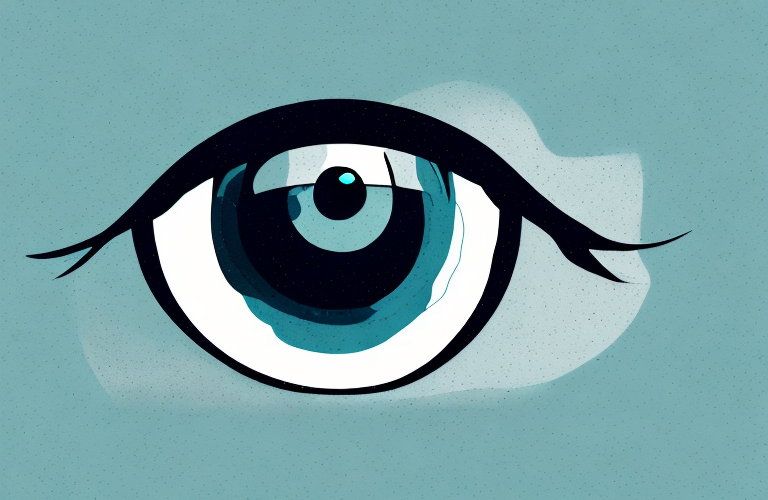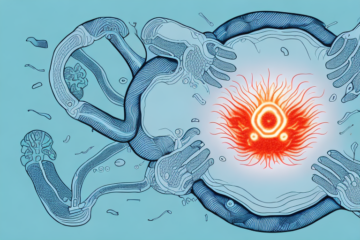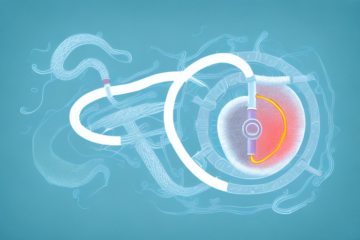Glaucoma is a serious eye condition that can lead to blindness if left untreated. It is caused by damage to the optic nerve, which is responsible for transmitting visual information from the eye to the brain. In this article, we will take a detailed look at glaucoma, including its causes, symptoms, treatment options, and prevention strategies.
What is Glaucoma? Understanding the Basics
Glaucoma is a group of eye conditions that damage the optic nerve. This leads to a gradual loss of vision, usually in both eyes. Glaucoma is often referred to as a “silent thief of sight” because it typically has no early warning signs or symptoms. By the time most people notice something is wrong, irreversible vision loss has already occurred.
There are several types of glaucoma, including open-angle glaucoma, angle-closure glaucoma, and normal-tension glaucoma. Open-angle glaucoma is the most common type and occurs when the drainage canals in the eye become clogged over time, leading to increased pressure in the eye. Angle-closure glaucoma occurs when the iris is too close to the drainage canals, blocking them and causing a sudden increase in eye pressure. Normal-tension glaucoma is a less common type of glaucoma where the optic nerve is damaged even though eye pressure is within the normal range.
Types of Glaucoma: Open-Angle and Angle-Closure
There are two main types of glaucoma: open-angle glaucoma and angle-closure glaucoma. Open-angle glaucoma is the most common form, accounting for about 90% of all cases. It typically develops gradually and has no noticeable symptoms until significant vision loss occurs. Angle-closure glaucoma, on the other hand, can develop suddenly and is often accompanied by severe eye pain, nausea, and vomiting.
Open-angle glaucoma is caused by a buildup of pressure in the eye due to a blockage in the drainage canals. This pressure damages the optic nerve, leading to vision loss. Risk factors for open-angle glaucoma include age, family history, and certain medical conditions such as diabetes and high blood pressure.
Angle-closure glaucoma, on the other hand, occurs when the iris (the colored part of the eye) blocks the drainage canals, causing a sudden increase in eye pressure. This type of glaucoma is more common in people of Asian descent and those with a family history of the condition. Treatment for angle-closure glaucoma typically involves emergency medical attention to lower the eye pressure and prevent permanent vision loss.
Causes and Risk Factors of Glaucoma
The exact cause of glaucoma is not fully understood. However, it is known that increased pressure in the eye is a major risk factor. Other risk factors include age (glaucoma is more common in older adults), a family history of glaucoma, and certain medical conditions such as diabetes and high blood pressure.
Recent studies have also suggested that a lack of physical activity and poor nutrition may increase the risk of developing glaucoma. This is because exercise and a healthy diet can help regulate blood flow and reduce inflammation, which are important factors in maintaining eye health.
In addition, certain medications such as corticosteroids and antihistamines have been linked to an increased risk of glaucoma. It is important to discuss any medications you are taking with your doctor, especially if you have a family history of glaucoma or other risk factors.
Signs and Symptoms of Glaucoma: When to Seek Medical Help
As mentioned earlier, glaucoma often has no early warning signs or symptoms. However, as the condition progresses, vision loss often begins to occur. Symptoms of advanced glaucoma can include loss of peripheral vision and tunnel vision. If you notice any changes in your vision, such as blurriness, cloudiness, or decreased peripheral vision, seek medical help immediately.
It is important to note that certain factors can increase your risk of developing glaucoma, such as age, family history, and certain medical conditions. Regular eye exams can help detect glaucoma early on, before symptoms even occur. If you are at a higher risk for glaucoma, it is recommended to have eye exams more frequently.
In addition to seeking medical help for changes in vision, there are also lifestyle changes that can help manage glaucoma. These include maintaining a healthy diet, exercising regularly, and avoiding smoking. Your doctor may also prescribe eye drops or other medications to help manage the condition.
How is Glaucoma Diagnosed? Tests and Procedures
Several tests and procedures can be used to diagnose glaucoma. These include a comprehensive eye exam, visual field test, and tonometry (a test to measure eye pressure). If glaucoma is detected, additional tests may be needed to determine the extent of the damage to the optic nerve.
One of the additional tests that may be used to diagnose glaucoma is optical coherence tomography (OCT). This test uses light waves to create detailed images of the optic nerve and can help determine the thickness of the nerve fibers. Another test that may be used is gonioscopy, which allows the doctor to examine the drainage angle of the eye to see if it is open or closed. These tests, along with a thorough medical history and examination, can help diagnose and manage glaucoma.
Treatment Options for Glaucoma: Medications, Surgery, and Laser Therapy
The goal of treatment for glaucoma is to lower eye pressure and prevent further damage to the optic nerve. There are several treatment options available, including eye drops, oral medications, laser therapy, and surgery. In most cases, treatment is lifelong and requires regular monitoring by an eye specialist.
Eye drops are the most common form of treatment for glaucoma. They work by reducing the amount of fluid produced in the eye or by improving the drainage of fluid. There are several types of eye drops available, and your doctor will determine which one is best for you based on your specific condition and medical history.
In some cases, laser therapy may be recommended as a treatment option for glaucoma. This involves using a laser to make small openings in the eye’s drainage system, allowing fluid to flow more freely and reducing eye pressure. Laser therapy is typically performed in a doctor’s office and is a relatively quick and painless procedure.
Lifestyle Changes to Manage Glaucoma: Diet, Exercise, and Stress Reduction
In addition to medical treatment, certain lifestyle changes can help manage glaucoma. This includes following a healthy diet, engaging in regular exercise, and learning stress-reduction techniques. It is also important to protect your eyes from injury, avoid smoking and secondhand smoke, and limit alcohol consumption.
Studies have shown that regular exercise can help lower intraocular pressure, which is a major risk factor for glaucoma. This can be achieved through activities such as brisk walking, jogging, or cycling. Additionally, incorporating foods rich in antioxidants, such as leafy greens and colorful fruits and vegetables, can also help protect the eyes from damage caused by free radicals. Finally, practicing relaxation techniques such as deep breathing, meditation, or yoga can help reduce stress levels, which can in turn lower intraocular pressure and improve overall eye health.
Coping with the Emotional Impact of a Glaucoma Diagnosis
A diagnosis of glaucoma can be overwhelming and scary. It is important to seek support from friends, family, and healthcare professionals. Joining a support group or seeking counseling can also be helpful in coping with the emotional impact of a glaucoma diagnosis.
It is important to remember that a glaucoma diagnosis does not mean the end of your life. With proper treatment and management, many people with glaucoma are able to maintain their vision and continue to live fulfilling lives. It is important to work closely with your healthcare team to develop a treatment plan that works for you.
In addition to seeking emotional support, it is also important to take care of your physical health. Eating a healthy diet, getting regular exercise, and managing stress can all help to improve your overall well-being and may even help to slow the progression of glaucoma. It is important to talk to your healthcare provider before starting any new exercise or dietary regimen.
Preventing Glaucoma: Tips for Maintaining Healthy Vision
While there is no guaranteed way to prevent glaucoma, there are steps you can take to maintain healthy vision. This includes getting regular eye exams, managing other medical conditions that can increase the risk of glaucoma (such as diabetes and high blood pressure), and wearing protective eyewear when playing sports or engaging in other activities that pose a risk of eye injury.
Another important step in preventing glaucoma is maintaining a healthy lifestyle. This includes eating a balanced diet rich in fruits and vegetables, exercising regularly, and avoiding smoking and excessive alcohol consumption. Studies have shown that these lifestyle factors can help reduce the risk of developing glaucoma.
In addition, it is important to be aware of your family history of eye diseases, as glaucoma can be hereditary. If you have a family history of glaucoma, it is recommended that you get regular eye exams starting at a younger age and discuss with your doctor if additional preventative measures are necessary.
Living with Glaucoma: Challenges, Support, and Resources Available
Living with glaucoma can be challenging, but with the right treatment and support, it is possible to maintain a good quality of life. There are a variety of resources available, such as support groups, educational materials, and assistive devices that can make daily life easier for those with glaucoma.
In conclusion, glaucoma is a serious eye condition that requires prompt diagnosis and treatment. With the right care and support, it is possible to manage the condition and maintain healthy vision. If you have any concerns about your eye health, seek medical help immediately.
It is important for individuals with glaucoma to regularly monitor their eye health and attend regular check-ups with their eye doctor. This can help to detect any changes in vision or progression of the condition, allowing for prompt treatment and management. Additionally, maintaining a healthy lifestyle, including regular exercise and a balanced diet, can also help to support overall eye health and manage the symptoms of glaucoma.










